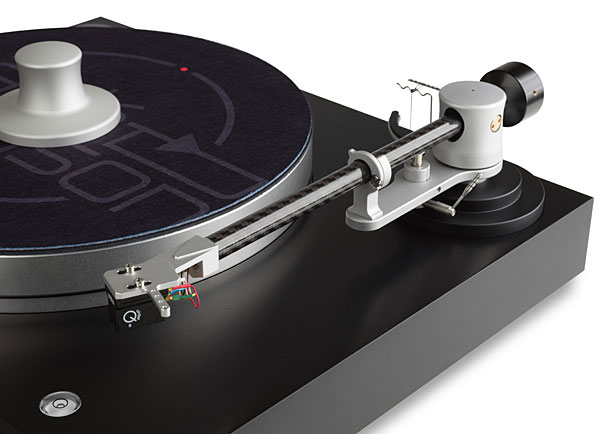Mark Levinson No5105 Turntable

 Mark Levinson's second turntable, the No5105, has been designed to be a painless, all-in-one, 'turnkey' affair – but does it still tick all the high-end boxes?
Mark Levinson's second turntable, the No5105, has been designed to be a painless, all-in-one, 'turnkey' affair – but does it still tick all the high-end boxes?
Like that 'difficult second album', any sequel to the Mark Levinson No515 [HFN Oct '17] has to live up to a heady precedent. At £5799 less cartridge, or £6499 with Ortofon's Quintet Black S MC pick-up installed, the No5105 sells for just over half the price of the No515. While the inclusion of the cartridge does not save any money – certainly not always the case when buying a package – it does remove any set-up worries by being factory-fitted.
That just happens to be the primary goal of the No5105: no-fuss ownership. Just as the No515 is part of the company's cost-no-object range, this is part of the 5000 series, the brand's 'entry-level' lineup. Amusingly, despite its undeniable, in-your-face luxuriousness, everything about it reeks of the simplicity associated with 'starter' decks of the sub-£300 variety, the type where you're up-and-running within 20 minutes. And that's a Good Thing.

Indeed, if purchased with cartridge in situ, this deck is so simple to set up that those who equate complexity with quality will be baffled. Only two elements are 'fiddly': the hanging-thread anti-skating weight (always a pain, regardless of make of tonearm) and the square cross-section belt. The latter requires looping first around the 14lb platter, then into the groove in the pulley, while keeping an eye on the edges. Ultimately, it untwists itself after a few rotations, but it is worth checking.
Pure Luxury
Other than that, this deck is a gift to those nervous about set-up, yet it allows plenty of scope for those who do like to tweak. The designers have delivered perfect universality, balancing ease-of-use with upgrade potential. The only 'fixed' element is the non-removable arm, but that seems increasingly more common. To ensure performance, post-'LP revival' turntable makers are reverting to the era of the AR Universal, the Empire 598 and others which could not be altered by arm changes.
Unlike the No515, which has its roots in VPI decks, and was manufactured for Mark Levinson by VPI, the No5105 is a clean-sheet design, using nothing off-the-shelf. Although fully conceived in-house, this turntable has been produced in its entirety – including tonearm – by a firm in Germany, which UK spokesperson James Todd said was 'the best to be found'.

You sense this engineering prowess the instant you make contact with the deck – the black finish and ruler-straight edges are as good as any I have experienced. This is pure luxury, which is as it should be with any piece of high-end audio gear. Every component attached to the slab of a plinth – the platter, the hefty puck, the adjustable feet – sends a signal that says 'upscale' to those who appreciate quality.
Total Freedom
It starts at the front, the red-lit speed-selection and power on/off buttons nestling in a machined insert. The rest of the deck is as deliciously uncluttered as a basic Pro-Ject or Rega, with only the absolutely necessary elements present: pulley, platter, tonearm. One little luxury – which ought to be found on every turntable – is a built-in spirit level. At the back, meanwhile, there's an IEC mains input and RCA tonearm outputs rather than a captive lead. Here ML places one element in the hands of the user, and that's the choice of cable, as no interconnect is supplied. As James explained, 'Our dealers are all seasoned retailers, with their own preferred brands. If we were to supply leads, some would like it, some wouldn't, so this becomes a user preference'.

As for the cartridge, there is no Mark Levinson-branded offering, which is ironic when one considers that a half-century ago, the original Levinson company single-handedly launched the concept of cartridges with indefensible, astronomical prices. However, the successful pairing of the earlier No515 with an Ortofon MC made it a go-to supplier, and the Quintet Black S is a honey of an MC. As every ML preamp and all but one of the integrated amps now feature fine phono stages, matching is easy, as is the potential to suit any other cartridge one might prefer.
As for the tonearm, it, too, is a gem, especially if you use low compliance MCs, of which I tried two – one costing more than the deck itself. The supplied set-up tools for overhang, VTA, etc, are some of the very best I have seen, and the manual – supplied with the mat in a gatefold LP sleeve – walks you through the procedure. Also, please permit one last observation regarding this deck's flexibility, despite it ostensibly being a 'closed system'.
























































